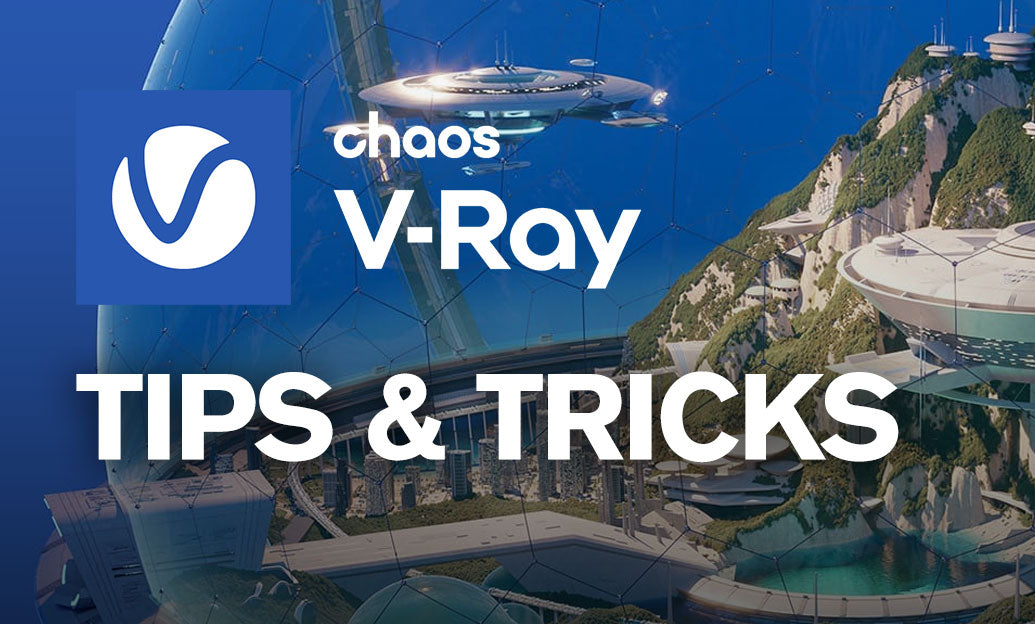Your Cart is Empty
Customer Testimonials
-
"Great customer service. The folks at Novedge were super helpful in navigating a somewhat complicated order including software upgrades and serial numbers in various stages of inactivity. They were friendly and helpful throughout the process.."
Ruben Ruckmark
"Quick & very helpful. We have been using Novedge for years and are very happy with their quick service when we need to make a purchase and excellent support resolving any issues."
Will Woodson
"Scott is the best. He reminds me about subscriptions dates, guides me in the correct direction for updates. He always responds promptly to me. He is literally the reason I continue to work with Novedge and will do so in the future."
Edward Mchugh
"Calvin Lok is “the man”. After my purchase of Sketchup 2021, he called me and provided step-by-step instructions to ease me through difficulties I was having with the setup of my new software."
Mike Borzage
V-Ray Tip: Accelerating Preview Renders with V-Ray Interactive: Practical Tips for Efficient Visualization
May 12, 2024 2 min read

For today's tip, we're focusing on how you can achieve faster preview renders with V-Ray Interactive. This is especially useful for artists and designers who need to iterate quickly without sacrificing the quality of their visualization. V-Ray Interactive is a powerful tool within the V-Ray arsenal that allows for real-time rendering and immediate feedback on lighting, material adjustments, and camera settings.
- Activate V-Ray Interactive: You can enable V-Ray Interactive by selecting the 'Interactive' button in the V-Ray toolbar. This turns on the interactive rendering mode, which will update your render in real-time.
- Adjust the Quality: In the V-Ray Asset Editor, under 'Render Settings', you can adjust the 'Quality' slider. A lower quality will yield faster results, which is perfect for previews.
- Use V-Ray GPU: If you have a powerful graphics card, switching to V-Ray GPU can significantly increase the speed of your interactive renders. GPU rendering utilizes the power of your graphics card to accelerate the rendering process.
- Limit the Render Region: Use the 'Render Region' tool to focus on a specific part of your scene. This allows you to render just a fraction of your view, saving time when you're only interested in previewing a particular area.
- Simplify the Scene: Temporarily simplify the scene by turning off complex elements like high-poly models, displacement, or high-resolution textures that you're not currently tweaking.
- Proxy Objects: Use V-Ray proxy objects to represent complex geometry during the preview phase. This will reduce memory consumption and improve render times.
- Turn off Unnecessary Lights: If certain lights in your scene are not affecting the area you're focused on, temporarily turning them off can speed up the interactive render process.
- Opt for Simpler Materials: During the preview phase, consider using materials with less complexity. You can refine and add detail to your materials after you've nailed down the broader aspects of your scene.
- Adjust the Interactive Threshold: In the 'Render Settings', you can find the 'Interactive' parameters. Adjusting the 'Noise threshold' can provide a quicker, albeit noisier, preview.
Remember, the goal of using V-Ray Interactive is not to produce final-quality images, but rather to provide a fast and responsive experience that helps you make creative decisions more efficiently. Always be sure to revert back to higher quality settings for your final render.
For more tips and tricks, or to get your hands on the latest V-Ray software, visit NOVEDGE.
You can find all the V-Ray products on the NOVEDGE web site at this page.
Also in Design News

💎 Rhino Artisan Arrives in Turkey: Revolutionizing Jewelry Design
February 27, 2025 1 min read
Read More
ZBrush Tip: Mastering Curve Surface for Unique Textures in ZBrush
February 27, 2025 2 min read
Read MoreSubscribe
Sign up to get the latest on sales, new releases and more …



